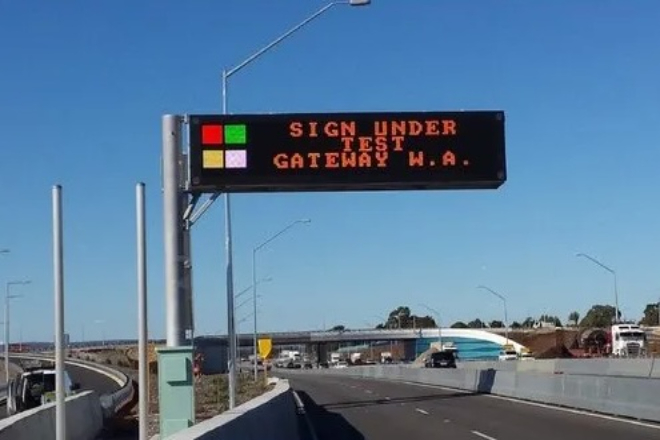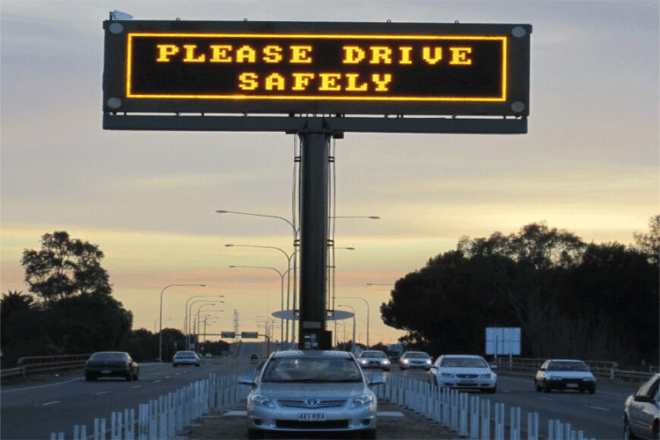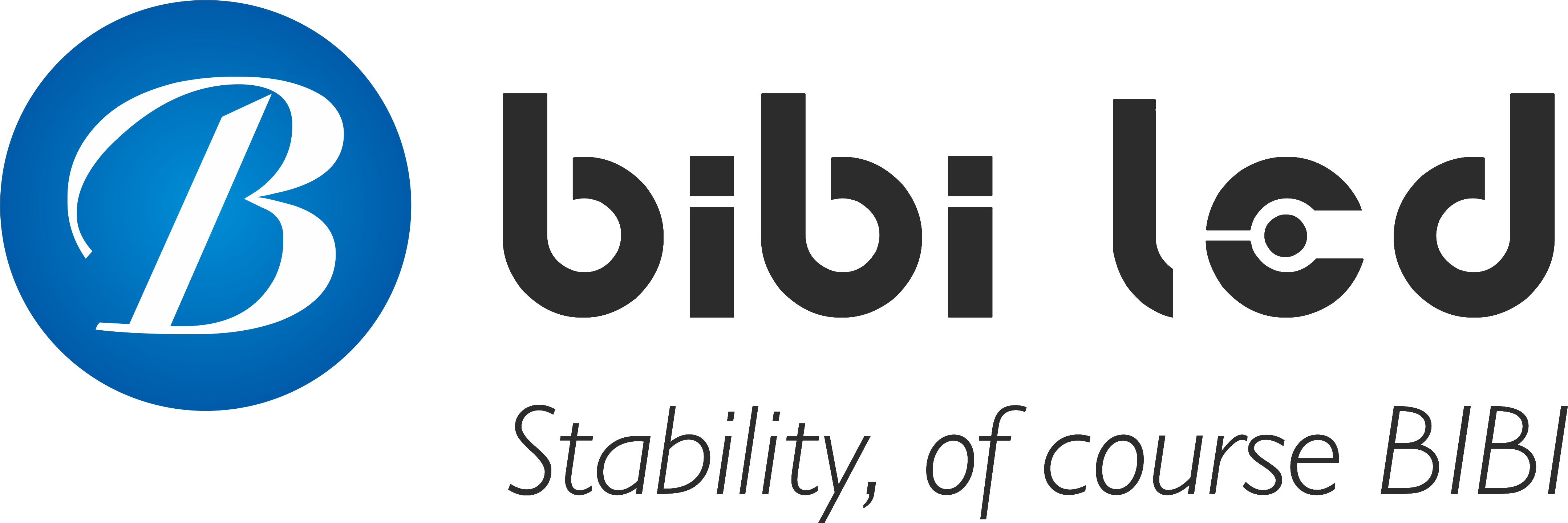Introduction
Have you ever wondered why you always run into traffic jams every time you go out or suddenly feel at a loss when waiting for a train at a subway station?
In fact, the reason behind this may be a good LED display screen! Don’t underestimate this thing.
It is not just a shiny screen but also a “superhero” in intelligent transportation. This article will talk about how to use LED display screens to improve information transmission in the field of intelligent transportation.
Table of Contents
1. What are the reasons for LED display screens in the field of intelligent transportation?
LED display screens are popular in intelligent transportation, first of all, because they are technically “capable.” Its brightness is particularly high.
Even under the sun, the displayed content can be seen clearly without worrying about being blinded by the sun.
Moreover, the technology is becoming more and more advanced, the clarity of the screen is getting higher and higher, the dot pitch is getting smaller and smaller, the displayed picture is clear and delicate, and the details can be seen clearly.
For example, on the highway, complex road condition prompts or some important notifications can be displayed clearly so that people can understand them at a glance.
Moreover, this thing is particularly “tough,” not afraid of the wind, sun, rain, heat, or cold. It has a good heat dissipation design and dustproof function and can run stably even in harsh environments.
Even if there are occasional minor problems, it will not affect the overall display, and it is also convenient to repair.
In addition, it can also be remotely controlled. The traffic management department can easily manage the display screens distributed in various places in the control center.
It is very convenient to update the content and check the status, which greatly reduces the trouble of manually running errands.
Traffic information needs to be updated at any time, and LED display screens are particularly powerful in this regard.
It can display various dynamic information in real-time, such as whether the road is congested, whether there are traffic accidents, how long the bus will arrive at the station, etc.
If this information can be updated in time, it can help everyone prepare in advance, such as avoiding traffic jams in advance or adjusting travel time.
Moreover, LED display screens can display not only text but also pictures, animations, and even videos, and the forms are particularly rich.
For example, in subway stations, in addition to displaying train schedules, they can also play advertisements, weather forecasts, or some interesting short videos to make waiting time less boring.
This diversified display method can not only make the traffic information more clearly transmitted but also add some fun.
In the field of transportation, the cost of equipment is a very important issue, and LED display screens have a great advantage in this regard.
Its service life is particularly long, and generally, there will be no major problems in a few years. Even if there are occasional minor problems, it is also very simple to repair and will not cost too much money.
And it is very energy-saving. Long-term use can save a lot of electricity bills.
Now that technology is becoming more and more mature, the price of LED display screens is becoming more and more affordable, and the cost performance is particularly high.
For the transportation department, choosing LED display screens can not only meet functional requirements, but also save a lot of costs in long-term use.
It can be said that it is a good deal to spend little money to do big things.
LED display screens are not only a simple display tool, but also can “play together” with many intelligent traffic equipment.
For example, it can be linked with traffic lights to display the countdown of traffic lights and remind drivers to pay attention to changes in traffic lights; in parking lots, it can display the availability of parking spaces to help drivers find parking spaces quickly.
Moreover, it can integrate multiple functions. In addition to displaying traffic information, it can also play advertisements, news, and weather forecasts and even be used for emergency notifications.
In this way, a display screen can do a lot of things, not only improving the utilization rate of traffic facilities but also bringing some additional benefits to the transportation department, such as advertising revenue.
LED display screens have another great benefit in traffic, which is to improve everyone’s travel experience and safety. It can display road conditions in real-time, help everyone plan routes in advance, avoid traffic jams, and save time.
For example, during rush hours in the morning and evening, it can remind drivers which sections of the road are heavily congested and which roads are relatively smooth, so that everyone can travel smoothly.
In terms of safety, it also helps a lot. For example, if a traffic accident occurs on the road or encounters bad weather, the LED display screen can immediately issue safety tips to remind drivers to slow down or detour in advance to avoid secondary accidents.
At subway stations or train stations, it can also display emergency evacuation information to help everyone evacuate quickly in emergencies and ensure everyone’s safety.
In short, LED display screens are like a “jack of all trades” in traffic. They can provide practical information and improve the safety and comfort of travel. No wonder everyone likes to use it so much.
2. How do I determine the information transmission effect of my LED display screen?

1). Check whether the screen is bright and whether it works well
First, check whether there is any problem with the screen itself. For example, turn on the screen to see if each point can emit light normally, whether there are any bad points or abnormal color display.
You can try to display a full white or full black screen, or only display a screen of one color to see if there are any obvious problems.
If there is a problem with the screen itself, the information will definitely not be transmitted well.
2). Check whether the brightness and color are uniform
It is also important whether the screen is bright and the color is good.
You can use professional equipment (such as a CCD camera) to take a picture of the screen and then analyze whether the brightness is uniform and the color is consistent.
If some places are particularly bright, some places are particularly dark, or the colors are different, the information will look awkward or even unclear.
3). Ask users how they feel
The most direct way is to ask users how they feel. For example, if it is a traffic display, you can ask drivers and passengers whether they can see the information on it clearly and whether the information is updated in time.
You can also observe the actual usage, such as whether the display can really help people avoid congestion or prepare in advance.
If everyone thinks it is easy to use, it means that the effect of information transmission is not bad.
4). See how fast the content is updated
The information must be updated in time, otherwise it will be useless. For example, traffic conditions change in real time, and the content on display must also change accordingly.
If the update is too slow or the displayed content is outdated, the effect of information transmission will definitely be greatly reduced.
So, check whether the connection between the display and the background system is smooth and whether the information can be synchronized in time.
5). Try the effect in different environments
Different weather and environment also have a great impact on the display. For example, under the sun, if the screen is not bright enough, it will not be clear; in rainy and foggy days, if the screen is blurry, it will not work.
So, you need to test it in various environments to see how the screen performs. If a problem is found, the brightness must be adjusted or the display effect must be optimized.
3. What are the benefits of improving the information transmission effect of LED display screens for the field of intelligent transportation?
1). Make traffic smoother
If the LED display screen can clearly and timely transmit traffic information, such as where there is a traffic jam and which road is unblocked, the driver can adjust the route in advance to avoid congested sections.
In this way, the traffic flow of the entire city will be smoother, and everyone will spend less time on the way to work and school, and feel better.
2). Reduce traffic accidents
In intelligent transportation, LED display screens can display safety tips, such as “Accident ahead, please slow down” or “Icy road, drive carefully.”
If this information can be clearly and promptly transmitted to drivers, they can prepare in advance to avoid sudden braking or sudden lane changes, thereby reducing the occurrence of traffic accidents.
3). Improve travel experience
For passengers, such as at subway stations or bus stops, if the LED display screen can clearly display the arrival time of trains or buses, route changes, and other information, passengers can arrange waiting time more reasonably without worrying.
Moreover, if the display screen could provide additional information such as weather and news, waiting for the bus would not be so boring.
4). Improve traffic management efficiency
For traffic management departments, if the information transmission effect of the LED display screen is good, they can more effectively release traffic control information, construction notices, etc.
For example, if there is construction on a certain section of the road, informing the driver through the display screen in advance can prevent the driver from mistakenly entering the construction area and reduce traffic chaos.
5). Improve the image of the city
A good LED display screen can not only transmit information but also show the city’s sense of technology and modernization level.
For example, near some important transportation hubs or city landmarks, clear and beautiful display screens will make the city look more vibrant and leave a good impression on tourists.
In short, improving the information transmission effect of LED display screens can not only improve traffic conditions but also improve everyone’s travel experience, reduce accidents, make the city run more efficiently, and create a better image.
4. What are the ways to improve the information transmission ability of LED display screens?

1). Improve hardware performance
First, the screen itself must be more “powerful.” For example, the pixel density of the screen can be made higher so that even if you look at it closely, the picture will not be blurred.
At the same time, using better materials and processes, the screen can display richer and more accurate colors.
Just like replacing ordinary paintbrushes with advanced ones, the paintings drawn will naturally be more beautiful.
The other thing is to make the screen refresh rate higher. With a high refresh rate, the picture looks smoother and there will be no “stuttering” feeling. Just like watching a movie, the higher the frame rate, the smoother the picture.
Also, the screen should be visible in all environments. For example, in strong light, the screen brightness should be high enough, and the contrast should be good so that the information can be displayed clearly.
Just like looking at a mobile phone in the sun, if the screen is too dark, the words cannot be seen clearly.
Finally, circuit design and chips are also critical. Using more advanced chips can improve screen color reproduction and make the display effect more natural.
2). Optimize software and system
The software aspect is also very important. For example, the screen can be equipped with a “smart brain” so that it can automatically adjust the brightness and color according to the environment.
For example, in a dark place, the screen will automatically dim, saving power and protecting the eyes.
Data transmission is also critical. Just like express delivery, information must be transmitted to the screen quickly and accurately.
Using high-speed communication protocols is like putting a “rocket” on the courier so that information can arrive instantly.
Also, there must be a good content management system. Just like a “commander”, it can automatically adjust the content displayed on the screen according to different scenarios. For example, during rush hour, it automatically displays traffic information.
3). Optimize content design
Content is also very important. In traffic scenarios, information must be simple and clear. For example, on traffic guidance screens, don’t write a long paragraph of text.
Just use simple icons and short text so that drivers can understand it at a glance.
The content must also be updated in time. For example, if the traffic information is displayed half an hour ago, it will not be practical. So it must be updated in real time to make the information more valuable.
If the scene is more complex, such as in an international place, it is necessary to support multiple languages.
In addition, sometimes using pictures or videos to display information will be more intuitive than text.
4). Improve environmental adaptability
Finally, the screen must be able to adapt to various environments. For example, waterproof and dustproof, so that the screen can work normally on rainy days or in dusty places.
Also, the screen should be able to automatically adjust the brightness according to the ambient light.
Just like the human eye adjusts the size of the pupil according to the light, the screen can also automatically adjust the brightness to ensure clear display in any environment.
Through these methods, the information transmission ability of the LED display can be stronger, it is easier to use, and it looks more comfortable.
5. Conclusion
After reading this article, do you think the LED display is quite powerful? In fact, it can really play a big role in intelligent transportation!
From improving travel efficiency to ensuring safety to making waiting for the bus no longer boring, it is like a “behind-the-scenes hero” who silently contributes.
Finally, if you want to know more about LED displays, please get in touch with us.
